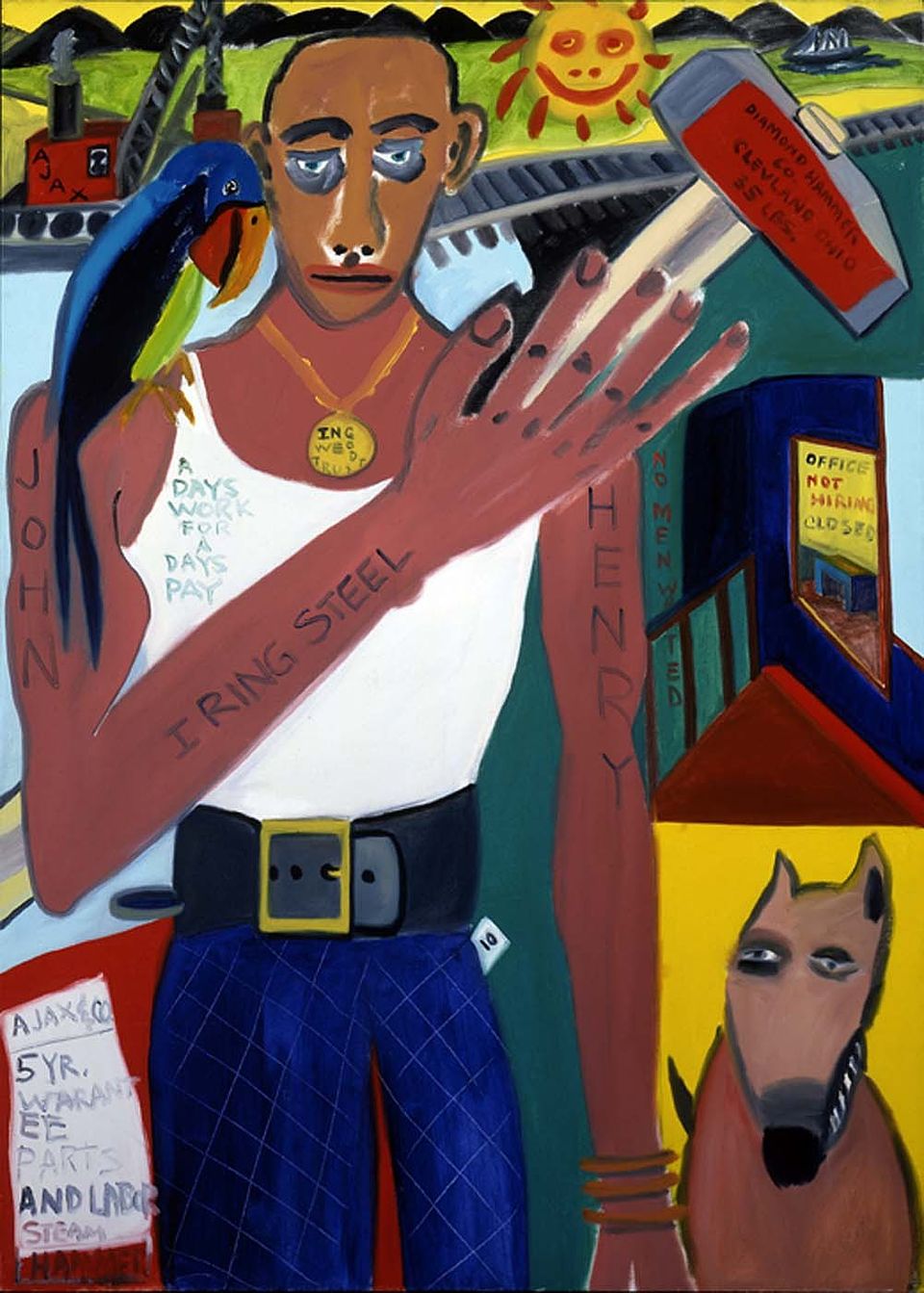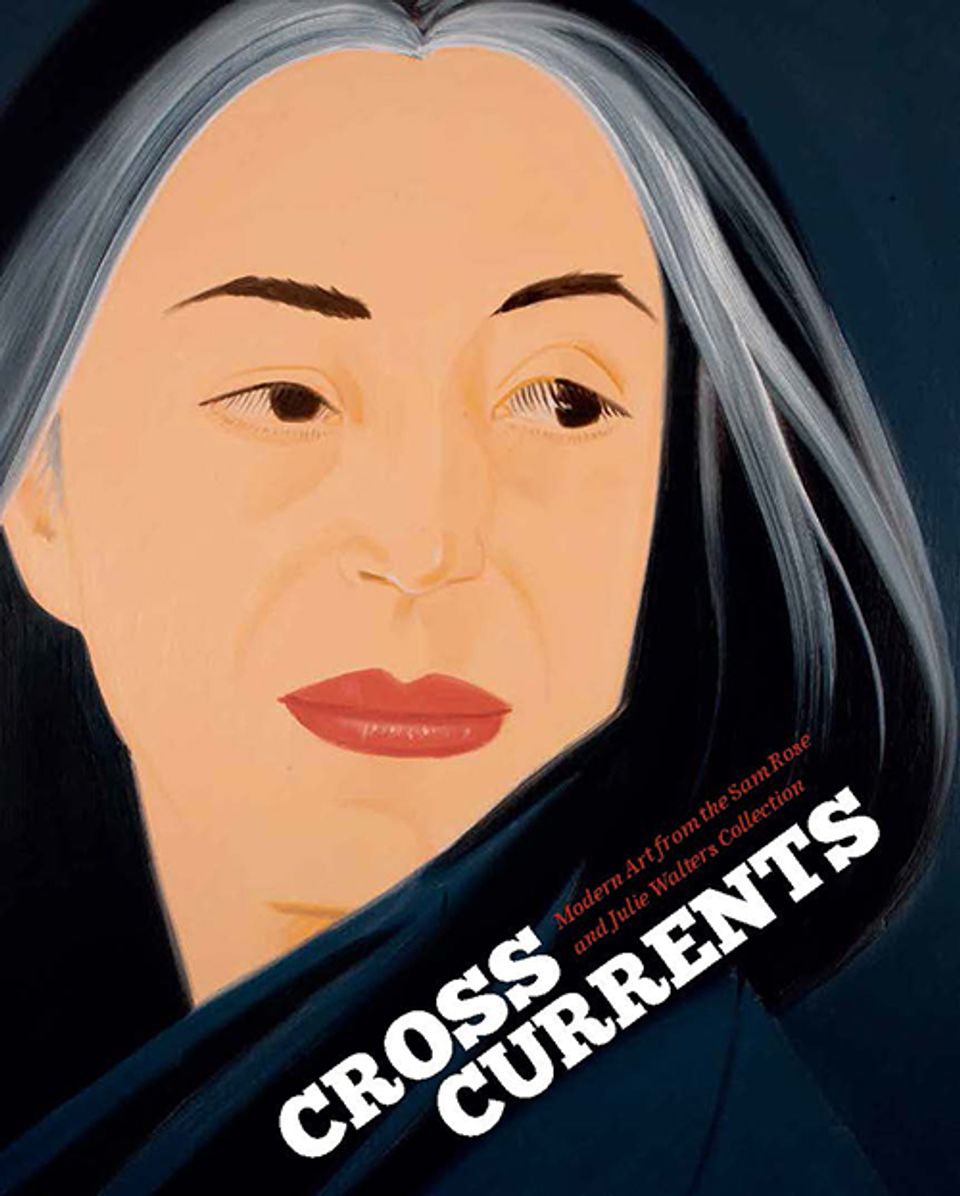Romare Bearden
- Also known as
- Romare H. Bearden
- Romare Howard Bearden
- Born
- Charlotte, North Carolina, United States
- Active in
- St. Martin
- Biography
Born in North Carolina; studied in the U.S. and in Paris; lived mostly in New York City. Dynamic artist who created archetypal figures of African Americans and others by combining different kinds of images, using oil paint or collage materials.
Charles Sullivan, ed. American Beauties: Women in Art and Literature (New York: Henry N. Abrams, Inc. in association with National Museum of American Art, 1993)
- Artist Biography
"It is not my aim to paint about the Negro in America in terms of propaganda . . . [but] the life of my people as I know it, passionately and dispassionately as Breughel. My intention is to reveal through pictorial complexities the life I know." — "Romare Bearden, The Human Condition" (New York: ACA Galleries, 1991), 2.
Romare Bearden, the only child of Richard Howard and Bessye Johnson Bearden, was born in 1912 in Charlotte, North Carolina, in the heart of Mecklenburg County. Shortly after his birth, Bearden's parents moved to New York City where his father worked as a sanitation inspector, and his mother became the New York editor of The Chicago Defender newspaper and the first president of the Negro Women's Democratic Association.
During the early 1920s the period of cultural flowering in the African American community known as the Harlem Renaissance was in its formative stages. The Bearden apartment on West 131st Street in Harlem was a frequent gathering place for such intellectuals as W. E. B. Du Bois, Paul Robeson, and Countee Cullen, as well as artists Aaron Douglas and Charles Alston, and jazz musicians Fats Waller, Duke Ellington, and Andy Razaf. The Lincoln Theatre, Savoy Ballroom, and a number of other night spots were only a few blocks from the Bearden apartment, and Bearden became deeply immersed in jazz and the Blues as an adolescent.
In 1925, Bearden went to Pittsburgh where he lived with his maternal grandmother and graduated from Peabody High School in 1929. His grandmother operated a boarding house that catered largely to steel mill workers, many of whom had recently emigrated from the South. New York City, Charlotte, and Pittsburgh were the cities of Bearden's childhood, and each made an indelible impression on Bearden as an artist many decades later. His artistic interests were developed in Pittsburgh when his boyhood friend, Eugene Bailey, taught him how to draw. Following Bailey's death in 1925, Bearden's interest in art waned.
Bearden had not considered a profession as an artist when he enrolled in New York University in the early 1930s. He graduated in 1935 with a B.S. degree in mathematics. During his years at New York University, however, Bearden worked as a cartoonist for the university's humor magazine, Medley, did editorial drawings for the Baltimore Afro American, and worked for Colliers and the Saturday Evening Post.
In 1935 Bearden decided to become a professional artist after a meeting of a group of African American artists who later became the Harlem Artists Guild. In 1936 Bearden joined an informal group of black artists in Harlem, the 306 Group—named after the studio lofts at 306 West 141st Street where the group met. During the same year, Bearden enrolled at the Art Students League where he studied under German expressionist George Grosz. A strong influence, Grosz introduced Bearden to the works of Daumier, Goya, Breughel, and Köllwitz, as well as Ingres, Dürer, Holbein, and Poussin.Bearden left the Art Students League after a year and a half, painted part time, and found employment as a caseworker in the New York City Department of Social Services. By 1940 Bearden had begun to paint in tempera on brown paper. From 1942 to 1945, Bearden served in the army. After his discharge, he held his first one man exhibition in a New York gallery—works from the "Passion of Christ" series—at the Samuel M. Kootz Gallery in 1945.
In 1950,Bearden decided to go to Paris and study philosophy part time at the Sorbonne on the G.I. Bill. In Paris, Bearden met painter Georges Braque, sculptor Constantin Brancusi, and a number of French and American artists and writers living in Paris. He visited museums and galleries while traveling to Nice, Florence, Rome, and Venice. Having produced no paintings in Paris, Bearden returned to New York in 1951. He abandoned painting for two years while concentrating on songwriting, and a number of his songs were published. In 1952 Bearden resumed his caseworker duties, and two years later he married Nanette Rohan, a dancer and artist. During the mid 1950s, with the encouragement of his friends and wife, Bearden resumed painting, concentrating on oils and acrylics.
Very conscious of the evolution of his style, Bearden once stated that his early temperas of the 1930s were composed of closed forms with colors that were primarily earthy browns, blues, and greens. When he began painting watercolors he employed bright color patterns with bold black lines to delineate shapes. The next step included oils that were largely extensions of his watercolors. He enlarged his initial sketches as photostats, traced them on gessoed panel, and completed an oil painting with a thinned color as if it were a watercolor. Bearden's early interest in flat painting was largely inspired by Stuart Davis, whom he met in 1940. Davis was deeply influenced by jazz and helped Bearden visualize a relationship between painting and jazz.At the height of abstract expressionism's popularity in New York, Bearden experimented with its techniques between the late 1950s and early 1960s. He produced a series of nonrepresentational paintings in which organic forms merge. Bearden, however, was never satisfied with abstract expressionism because he felt that it lacked a philosophy. Bearden subsequently began experimenting with a technique in which he painted broad areas of color on various thicknesses of rice paper and glued the papers on canvas, usually in several layers. He then tore sections of the paper away, upward and across the picture plane, until a motif emerged. Finally, he added more paper and painted additional elements to complete the painting.
The turbulent decade of the 1960s sparked the most important stage in Bearden's career. In 1963 a group of African American artists in New York met in his studio to discuss how they could contribute to the civil rights movement. From this meeting the "Spiral" group was formed, and its members began to reassess their responsibilities as artists to society. One of the Spiral members suggested that Bearden enlarge his photomontages photographically. He experimented with this technique, but was not satisfied with the results. Arne Ekstrom, a New York art dealer, saw the rolled up photostats in Bearden's studio and was so impressed that he encouraged Bearden to create a series of the works for an exhibition, entitled "Projections," at Ekstrom's gallery in October 1964. The following year, the Corcoran Gallery of Art in Washington, D.C., organized a second "Projections" show, Bearden's first one man museum exhibition. The success of this series was such that he was able to support himself as a professional artist, and in 1966 Bearden gave up his job as a social worker.
The "Projections" series consists of monochromatic photomontages and photostats that Bearden called "Photo Projections." In these works, silhouettes of faces and hands have been cut from black and white photographs and then combined in carefully orchestrated designs. Scenes from African American life in Charlotte, Harlem, and Pittsburgh mark Bearden's return to figurative painting. Stylistically, the scenes were inspired by African sculptures, Chinese calligraphy, and European painters as diverse as Bosch, Zurbarán, and Mondrian. Although Bearden never considered himself a propagandist, his dramatic "Projections" seemed artistically appropriate for the new black pride movement. These works brought Bearden unprecedented success and remain this prolific artist's most acclaimed efforts.
Between 1967 and 1969, Bearden produced some of his largest and most innovative works. Memories of Mecklenburg County, North Carolina, abound, reaffirming Bearden's roots in the rural South. Often incorporating life size imagery, these paintings combine collage with acrylics, drawings and oils, mosaics of real textures, and black and white photographs. Bearden always insisted that his works were paintings, not collages, because he used the techniques and materials of collage to create the rhythms, surfaces, tones, and moods associated with painting.
During the 1970s and 1980s, Bearden refined his style and continued to emphasize subjects derived from African American genre and myth. In 1977, an exhibition entitled Romare Bearden, Odysseus at Cordier and Ekstrom Gallery in New York, included paintings inspired by classical themes. Taken from the Homeric legends, these paintings incorporated larger and fewer collage elements, flat shapes of objects and people, and emphasized a single color such as blue or green. During the 1970s, motifs inspired by jazz and the Blues reappeared in Bearden's work; in 1977 an exhibition of monoprints, Of the Blues, received critical acclaim. By the late 1970s, Bearden began to use more vibrant and intense colors in his paintings, perhaps as a direct result of numerous trips to St. Martin in the West Indies, which is his wife's family home. During the 1980s the impact of this environment can also be seen in Bearden's final works, a watercolor series of Caribbean landscapes, seascapes, and portraits.
Bearden was also a writer. His first book, The Painter's Mind, was co written with the artist Carl Holty in 1969. He coauthored Six Black Masters in American Art in 1972 with Harry Henderson, and was working on a second book with Henderson, A History of African American Artists, at the time of his death. Bearden also organized several important exhibitions including Contemporary Art of the American Negro in Harlem in 1966 at what is now the site of the Studio Museum in Harlem, and in 1967, with art historian Carroll Greene, he organized "The Evolution of Afro American Artists: 1800–1950" at City College in New York. Bearden received five honorary doctoral degrees, and was elected to membership in the American Academy of Arts and Letters and the National Institute of Arts and Letters in 1966. A year before his death in 1988, Bearden received the prestigious President's National Medal of the Arts.
Regenia A. Perry Free within Ourselves: African American Artists in the Collection of the National Museum of American Art (Washington, D.C.: National Museum of American Art in Association with Pomegranate Art Books, 1992)
















